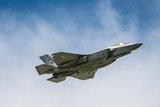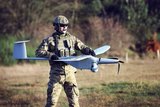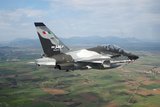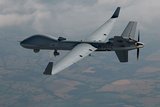VADER completes first African tests
VADER (left of picture) with Rafale. (Photo: French Air and Space Force)
The first VADER light surveillance and reconnaissance aircraft for the French Air and Space Force completed its first mission from 28 April to 21 May 2021, the French MoD announced on 22 June.
The hot-weather tests in Djibouti ‘made it possible to assess the logistical support and resilience of the equipment in an environment close to its future missions’, the MoD noted.
These ‘future missions’ include deployment to Mali, Shephard recently reported.
VADER (formerly known as ALSR) IS based on the Beechcraft King Air 350 ISR aircraft.
Two were delivered in July 2020 by Sabena Technics and Thales under a contract dating from June 2016. According to Shephard Defence Insight, they are operated by the air force but owned by the French intelligence services.
A third is scheduled for delivery in 2023, and the French Air and Space Force wants eight in all to be in service by 2030.
Related Programmes in Defence Insight
Strategic Intelligence Aircraft [France]
Related Equipment in Defence Insight
More from Air Warfare
-
![Portugal signals interest in establishing A-29N final assembly line]()
Portugal signals interest in establishing A-29N final assembly line
As the launch customer for the NATO-configured variant, Portugal also took delivery of the first five A-29N aircraft from its order for 12, placed in 2024.
-
![Leonardo signs contract on Austria’s M-346 aircraft order]()
Leonardo signs contract on Austria’s M-346 aircraft order
The first of the 12 M-346 aircraft are expected to be delivered to the Austrian Air Force by 2028, according to the company.
-
![2025 UAV market review: $7.8 billion in new contracts signed as US leads spending]()
2025 UAV market review: $7.8 billion in new contracts signed as US leads spending
Qatar and Indonesia followed the US’s high spending on new uncrewed aerial vehicle contracts across 2025, while MALE and micro drones and loitering munitions were particularly popular subcategories this year.






















